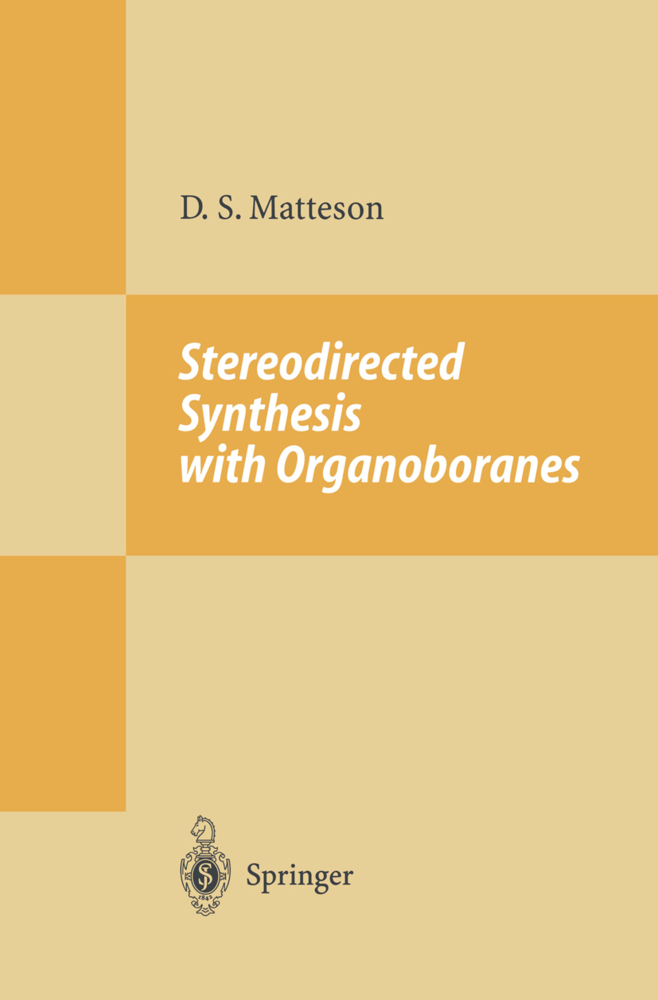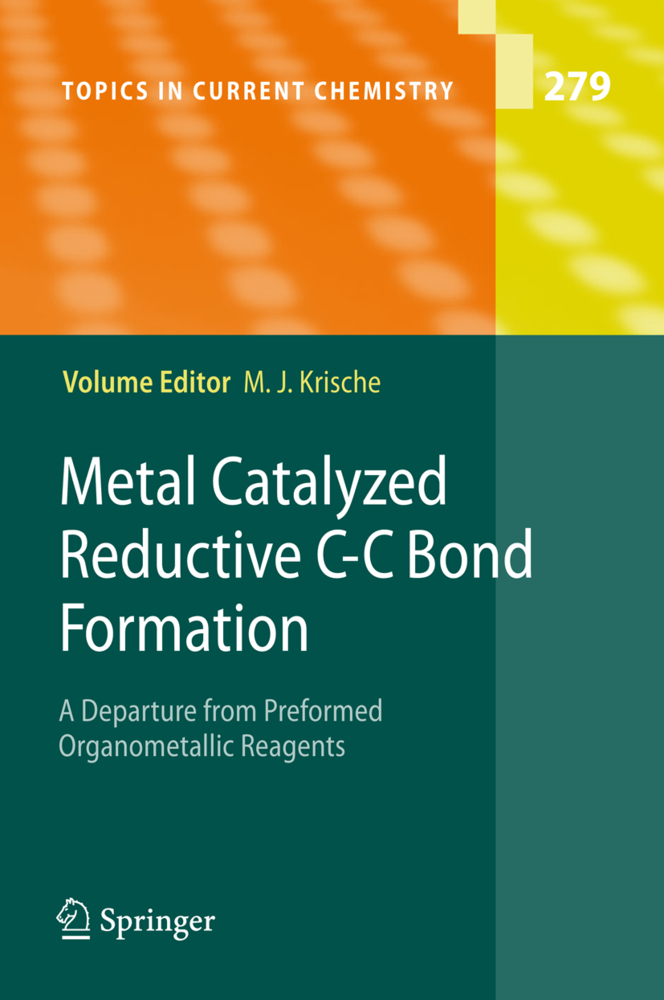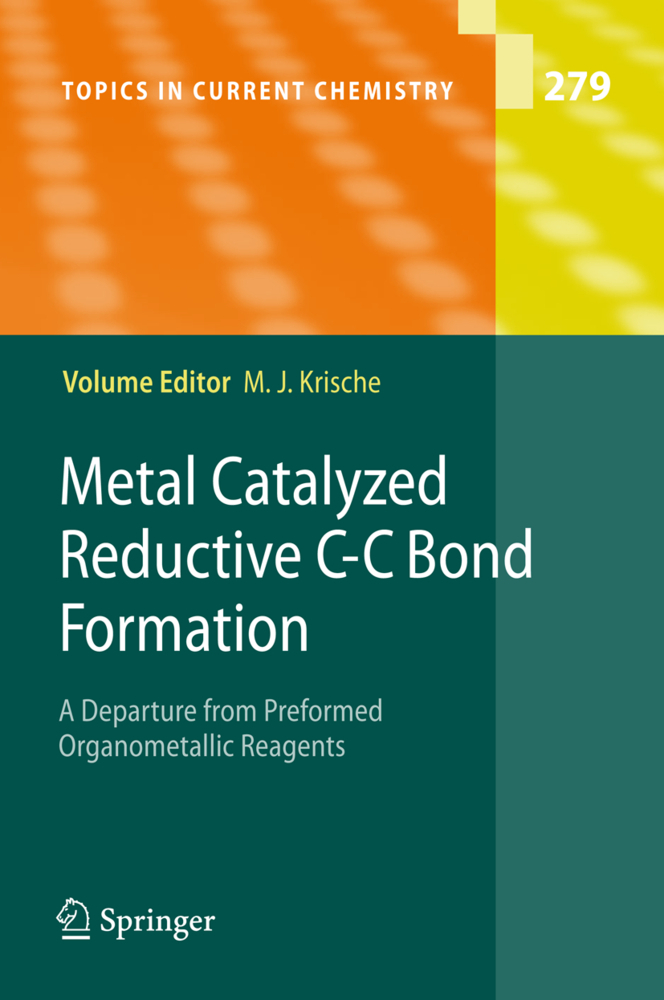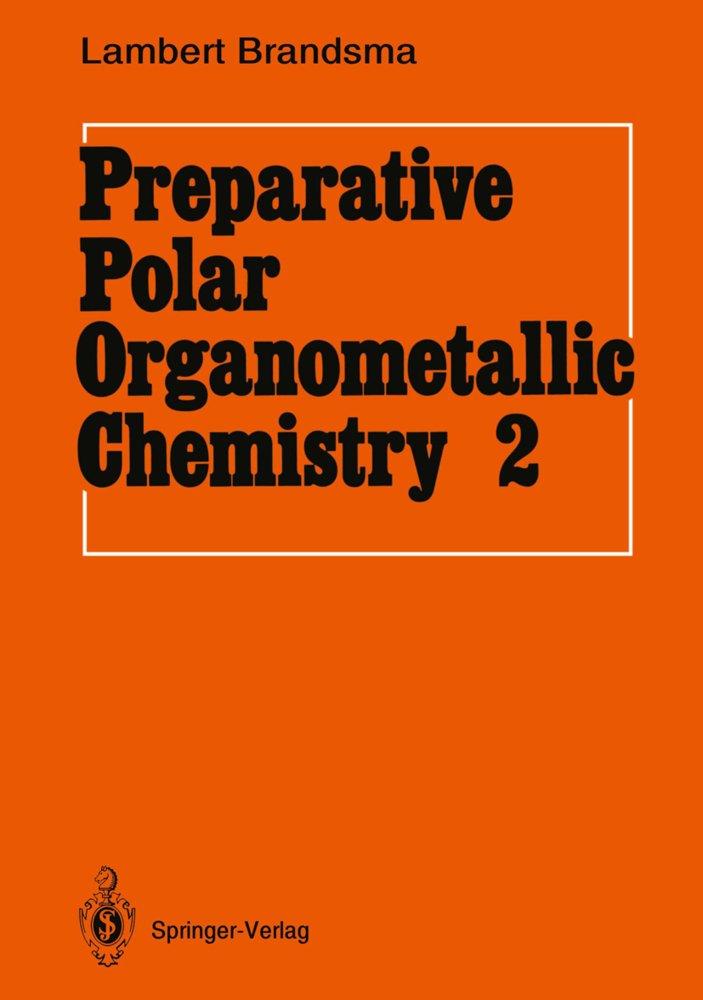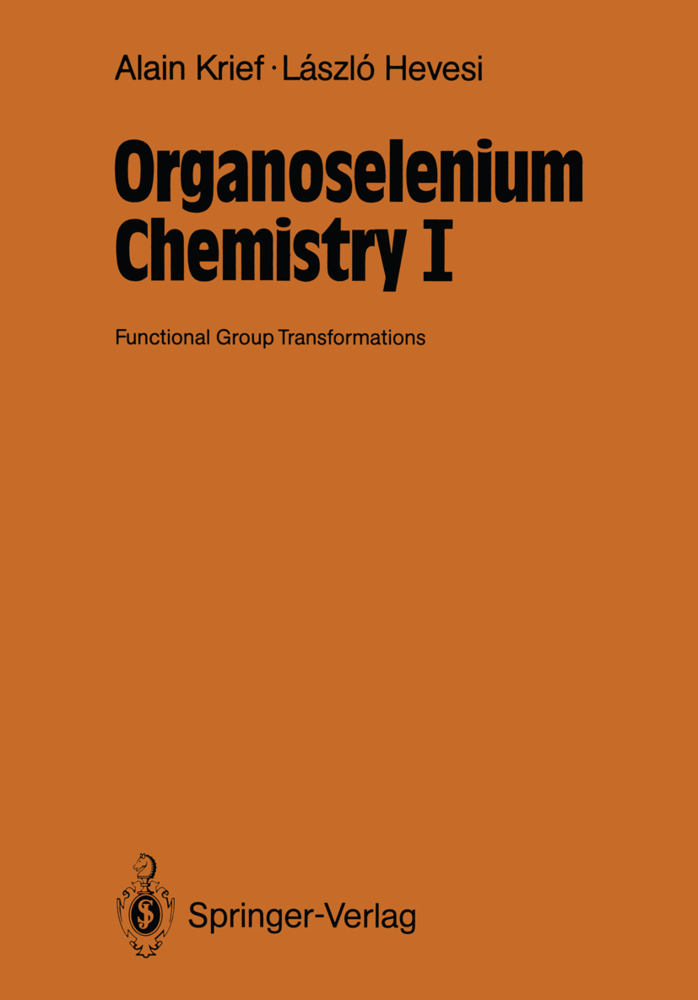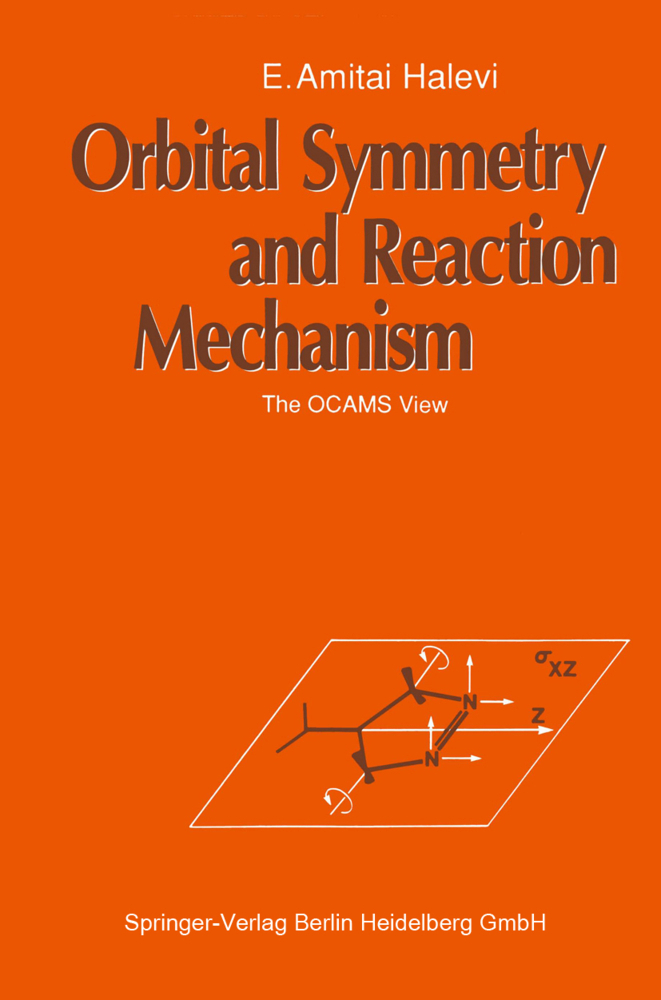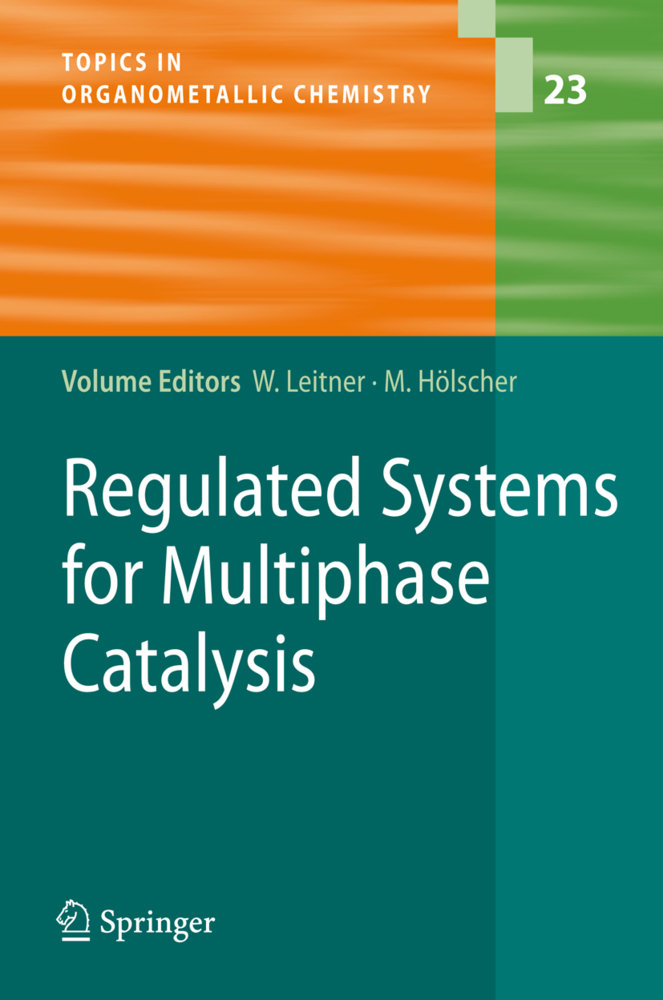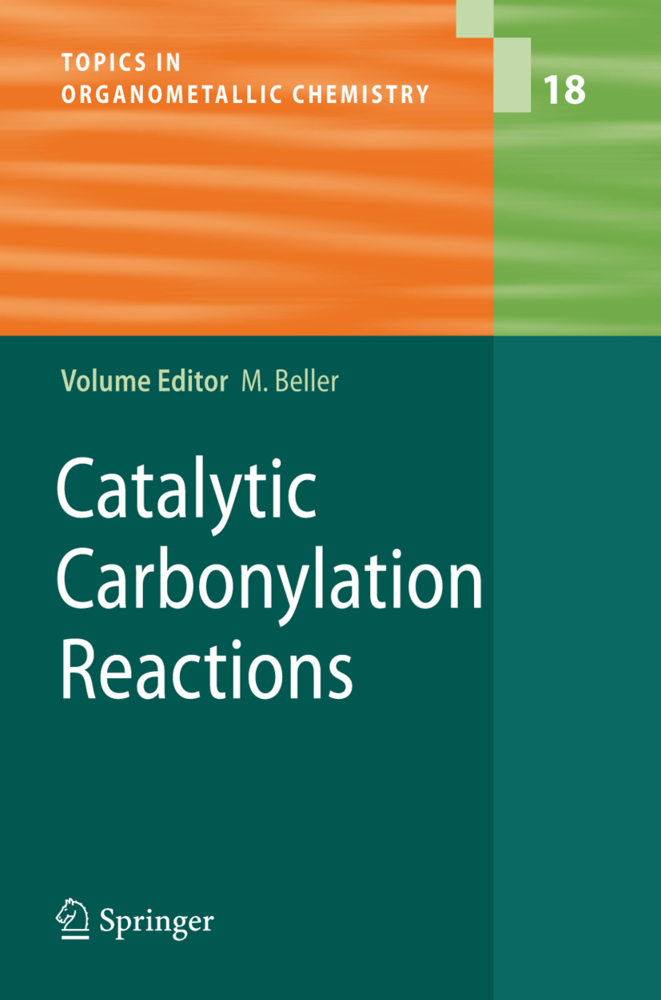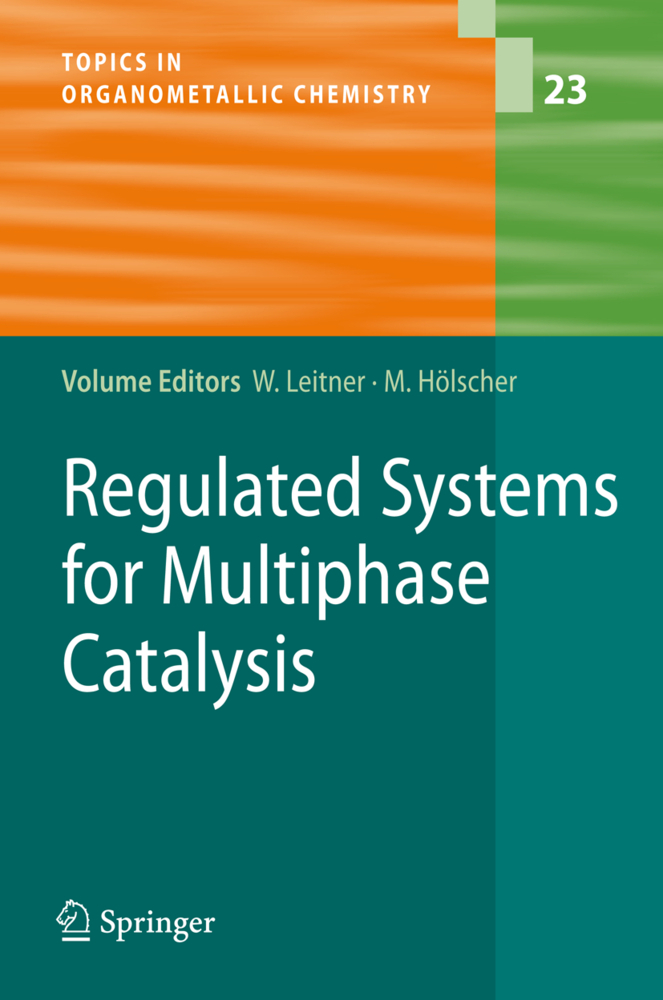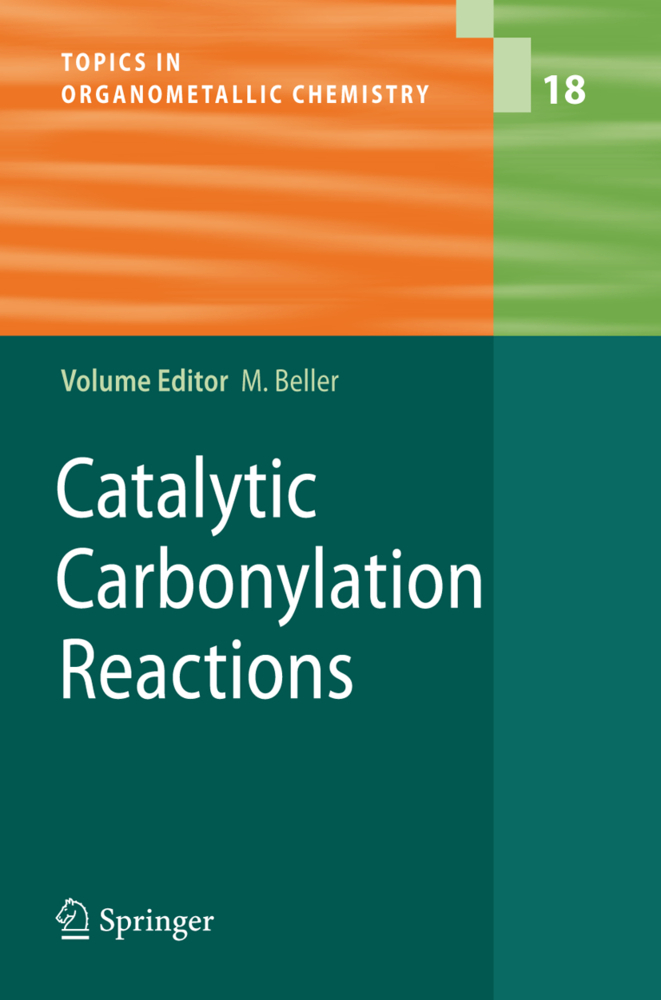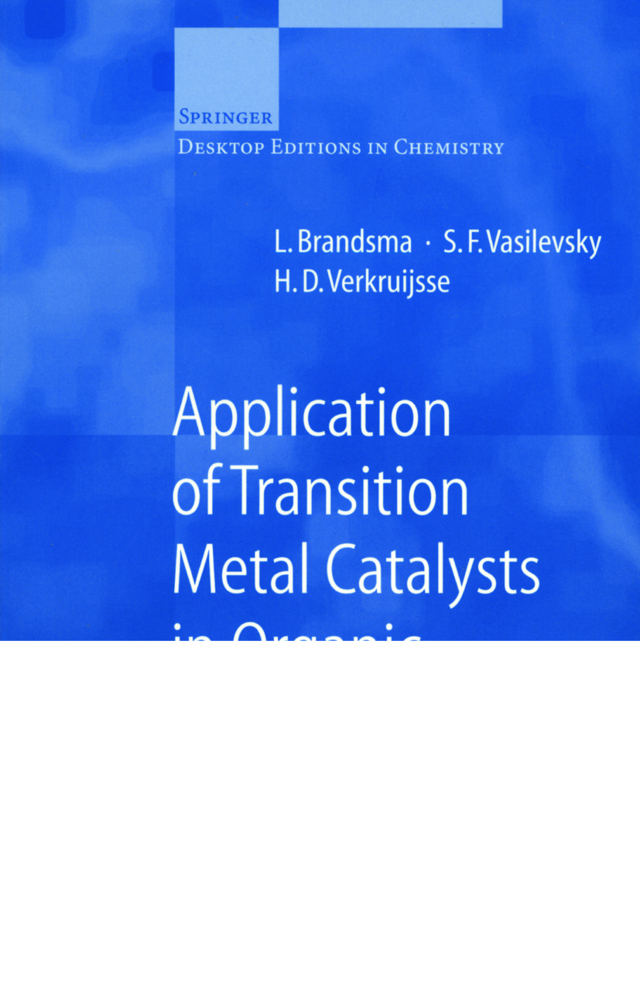Stereodirected Synthesis with Organoboranes
Stereodirected Synthesis with Organoboranes
This chapter provides abrief overview of organoborane reaction types. Reaction mechanisms are discussed, particularly with reference to whether they may or may not allow stereocontrol, but stereocontrolled applications are deferred to later chap ters. Reactions that replace boron by atoms other than carbon are discussed first (Section 3. 2), followed by boron substituted carbanions (Section 3. 3) and reactions that have the net effect of replacing boron-carbon bonds by carbon-carbon bonds (Section 3. 4). However, ß-eliminations, which also create a carbon-carbon bond at the expense of a boron-carbon bond, are deferred to Section 4. 2. Finally, a variety of reactions of organoboranes that leave the boron-carbon bond intact and affect other functionality are described in Section 3. 5. 3. 2 Oxidative Replacement of Boron 3. 2. 1 Introduction Several oxidative boron-carbon bond cleavage reactions replace the boron atom stereospecifically with retention of configuration of the carbon atom, and therefore are particularly useful in asymmetric synthesis. These share the following general mechanistic features: (I) Coordination of an oxidizing agent having a nucleophilic site, (:Y_Z)-n (n = 0 or I), to the boron to form aborate complex (1). (2) Intramolecular migration of carbon from the electron-rich boron atom to the rela tively electron-deficient atom Y with concurrent displacement of nucleofuge z-n, as illustrated by transition state 2 and product 3.
1.2 Structure and Bonding in Organoboranes
1.3 General Chemical Properties of Organoboranes
1.4 Safety Considerations
1.5 References
2 Sources of Compounds Containing Boron-Carbon Bonds
2.1 Industrial Sources of Boron Compounds
2.2 The Organometallic Route
2.3 Hydroboration
2.4 Haloborations
2.5 Other Routes to Carbon-Boron Bonds
2.6 References
3 General Reactions of Organoboranes
3.1 Introduction
3.2 Oxidative Replacement of Boron
3.3 Boron Substituted Carbanions
3.4 Replacement of Boron by Carbon
3.5 Reactions at Sites Other than the B-C Bond
3.6 References
4 Alkenylboranes and Control of Olefinic Geometry
4.1 Introduction
4.2 ?-Elimination Routes to Unsaturated Compounds
4.3 The Suzuki Coupling Reaction
4.4 Other Stereoselective Routes to Alkenes
4.5 References
5 Asymmetric Synthesis via (a-Haloalkyl)boronic Esters
5.1 Introduction
5.2 Synthetic Methodology: Pinanediol Esters
5.3 Synthetic Methodology: Chiral Directors Having C2 Symmetry
5.4 Synthetic Applications
5.5 References
6 Asymmetric Hydroboration Chemistry
6.1 Introduction
6.2 Asymmetric Hydroboration
6.3 Transformations of Asymmetric Organoboranes
6.4 Substrate Directed Hydroboration
6.5 Catalytic Asymmetric Hydroboration
6.6 References
7 Allylboron and Boron Enolate Chemistry
7.1 Introduction
7.2 Allylic Boronic Esters
7.3 Allyldialkylboranes
7.4 Boron Enolates
7.5 References
8 Diels-Alder Reactions
8.1 Introduction
8.2 Alkenylboranes
8.3 Butadienylboranes
8.4 Catalyzed Diels-Alder Reactions
8.5 References
9 Asymmetric Reductions and Miscellaneous Reactions
9.1 Introduction
9.2 Reductions with Alkylboranes
9.3 Reductions with Asymmetric B-HCompounds
9.4 Other Borane Catalyzed Reactions
9.5 Asymmetric Hydrozirconation
9.6 References
Author Index.
1 Introduction to Borane Chemistry
1.1 Beginnings1.2 Structure and Bonding in Organoboranes
1.3 General Chemical Properties of Organoboranes
1.4 Safety Considerations
1.5 References
2 Sources of Compounds Containing Boron-Carbon Bonds
2.1 Industrial Sources of Boron Compounds
2.2 The Organometallic Route
2.3 Hydroboration
2.4 Haloborations
2.5 Other Routes to Carbon-Boron Bonds
2.6 References
3 General Reactions of Organoboranes
3.1 Introduction
3.2 Oxidative Replacement of Boron
3.3 Boron Substituted Carbanions
3.4 Replacement of Boron by Carbon
3.5 Reactions at Sites Other than the B-C Bond
3.6 References
4 Alkenylboranes and Control of Olefinic Geometry
4.1 Introduction
4.2 ?-Elimination Routes to Unsaturated Compounds
4.3 The Suzuki Coupling Reaction
4.4 Other Stereoselective Routes to Alkenes
4.5 References
5 Asymmetric Synthesis via (a-Haloalkyl)boronic Esters
5.1 Introduction
5.2 Synthetic Methodology: Pinanediol Esters
5.3 Synthetic Methodology: Chiral Directors Having C2 Symmetry
5.4 Synthetic Applications
5.5 References
6 Asymmetric Hydroboration Chemistry
6.1 Introduction
6.2 Asymmetric Hydroboration
6.3 Transformations of Asymmetric Organoboranes
6.4 Substrate Directed Hydroboration
6.5 Catalytic Asymmetric Hydroboration
6.6 References
7 Allylboron and Boron Enolate Chemistry
7.1 Introduction
7.2 Allylic Boronic Esters
7.3 Allyldialkylboranes
7.4 Boron Enolates
7.5 References
8 Diels-Alder Reactions
8.1 Introduction
8.2 Alkenylboranes
8.3 Butadienylboranes
8.4 Catalyzed Diels-Alder Reactions
8.5 References
9 Asymmetric Reductions and Miscellaneous Reactions
9.1 Introduction
9.2 Reductions with Alkylboranes
9.3 Reductions with Asymmetric B-HCompounds
9.4 Other Borane Catalyzed Reactions
9.5 Asymmetric Hydrozirconation
9.6 References
Author Index.
Matteson, Donald S.
| ISBN | 9783642797118 |
|---|---|
| Medientyp | Buch |
| Copyrightjahr | 2012 |
| Verlag | Springer, Berlin |
| Umfang | 405 Seiten |
| Sprache | Englisch |

